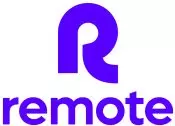Global HR experts: NZ companies can hire overseas remote workers.
Technology has played a big part in the current skills shortage facing many New Zealand businesses, but it may also be part of the solution – linking employers here with a worldwide market of talent they might not otherwise be able to reach.
Job van der Voort, CEO and co-founder of global HR platform Remote, says in recent years rapid advancements in technology, especially the wider integration of AI and constant upgrades to software, have transformed the labour market, creating demand for new skills while rendering others out of date.
“The pace of these technological changes often outstrips the ability of educational institutions and training programmes to keep up, leading to skill gaps,” van der Voort says. “New Zealand in particular faces the issue of talent drain – those choosing to live abroad and work overseas. It’s a complex issue that’s been brewing for a while, but Covid-19 has definitely kicked it up a notch.”
A survey by the New Zealand Employers and Manufacturers Association (EMA) released last year showed that, of the more than 500 businesses surveyed, 90 per cent were struggling to fill vacancies, with highly skilled staff being the hardest to recruit. Nearly half of respondents were looking to immigration to help fill the gap, but many had concerns about the migrant visa process.

“New Zealand faces several unique circumstances when it comes to recruiting talent, including a relatively small population, geographic isolation, and competition with larger international markets for skilled workers,”’ says van der Voort, noting that the tech, AI and healthcare sectors are among those most greatly affected.
“These factors make New Zealand businesses prime candidates for tapping into the international talent market to fill their open roles.”
Van der Voort says one potential solution is a “distributed workforce”, where an organisation’s employees and teams operate remotely from multiple locations, often across different countries.
“It is not a new concept — many companies have distributed their workforces across multiple offices for many years,” he says. “However, now there’s a growing recognition that remote work, once seen primarily as an employee perk, can be the basis of a strategic shift toward a new, permanent operating model and a distributed workforce that spans across borders.”

Acceptance of remote working, using internet-based communication tools and cloud computing, has been accelerated by the pandemic, which demonstrated the benefits for both sides of the employment equation.
“For employees, the flexibility it provides has allowed for a healthier work-life balance. They’re just as, if not more, productive because they can work on their own terms,” van der Voort says.
“For employers, by retaining a remote work model, they’ve gained new possibilities for talent acquisition. By offering remote roles, they can access a larger, global talent pool, and offering such flexibility can also attract new talent and improve employee retention rates.”
He says remote working also increases opportunities for diversity and inclusion in the workforce, including women, caregivers and those with disabilities.

“Think about it: when companies offer fully remote positions, they're no longer limited to hiring people who live nearby. They can find talent from all over, which means they get a more diverse group of people with different nationalities, backgrounds, and experiences.
“Remote work also takes away some of the biases that can come with traditional hiring practices, by prioritising skills and qualifications over superficial factors, promoting more equitable recruitment.”
However, hiring and managing a workforce spread across the globe comes with its own set of challenges, not least differences in local employment laws, norms, compliance matters, reporting requirements and taxation.
“For example, if a business in New Zealand wants to hire a full-time employee based in America, they would have to pay American taxes, follow American labour laws, and offer American-style retirement benefits, which is very different from the New Zealand system.
“It becomes even more complex when you include issues like payroll, employee classification, and even the steps used to onboard and offboard employees,” van der Voort says.
Working with a global HR platform such as Remote can streamline the process, he says, with experts in each market managing the legal and practical challenges of managing a distributed workforce, streamlining global payroll processes, reducing administration and maintaining compliance across different jurisdictions.
Remote practises what it preaches – with its own distributed workforce, with no physical head office and employees spread around the globe.
“We’ve been able to recruit the best talent from all over the world. This makes our hiring so much more holistic, and we have access to high-quality candidates,” van der Voort says. “We’ve also been able to leverage the advantage of different time zones, which has allowed us to move projects forward quickly.
“This is only possible because we also use an asynchronous work model — when one team finishes their work day, another team in a different time zone can pick up where they left off.”
Remote working for international companies, utilising platforms such as Remote, also benefits Kiwis who want to remain based here but broaden their career possibilities.
“We firmly believe talent is everywhere, but opportunity is not. This lets New Zealand-based talent access opportunities once only available to those within physical proximity of a company,” van der Voort says. “Overall, technology-driven platforms open doors for New Zealand-based talent to expand their professional horizons, build international networks and gain valuable work experience on a global scale.”
To learn more on how businesses can hire talent globally, visit Remote.com.






